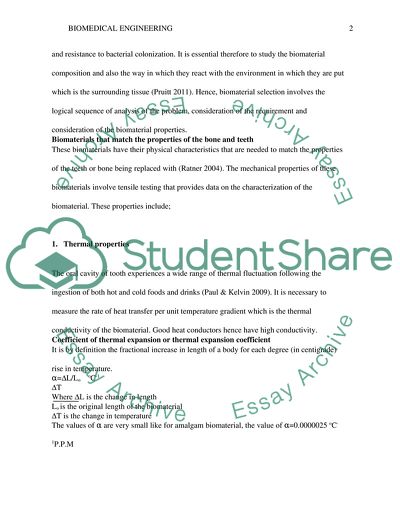Cite this document
(Biomedical Engineering: Biomaterials Coursework Example | Topics and Well Written Essays - 1500 words - 1, n.d.)
Biomedical Engineering: Biomaterials Coursework Example | Topics and Well Written Essays - 1500 words - 1. https://studentshare.org/engineering-and-construction/1788217-biomedical-engineering
Biomedical Engineering: Biomaterials Coursework Example | Topics and Well Written Essays - 1500 words - 1. https://studentshare.org/engineering-and-construction/1788217-biomedical-engineering
(Biomedical Engineering: Biomaterials Coursework Example | Topics and Well Written Essays - 1500 Words - 1)
Biomedical Engineering: Biomaterials Coursework Example | Topics and Well Written Essays - 1500 Words - 1. https://studentshare.org/engineering-and-construction/1788217-biomedical-engineering.
Biomedical Engineering: Biomaterials Coursework Example | Topics and Well Written Essays - 1500 Words - 1. https://studentshare.org/engineering-and-construction/1788217-biomedical-engineering.
“Biomedical Engineering: Biomaterials Coursework Example | Topics and Well Written Essays - 1500 Words - 1”. https://studentshare.org/engineering-and-construction/1788217-biomedical-engineering.


